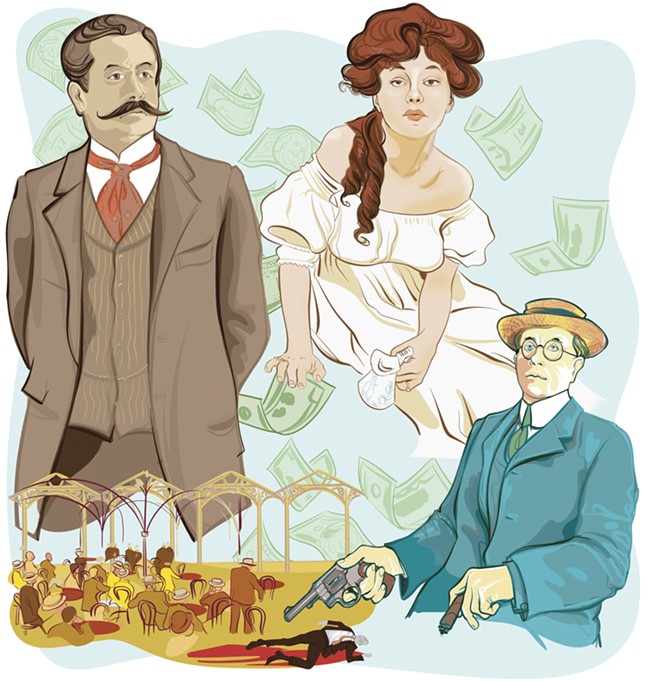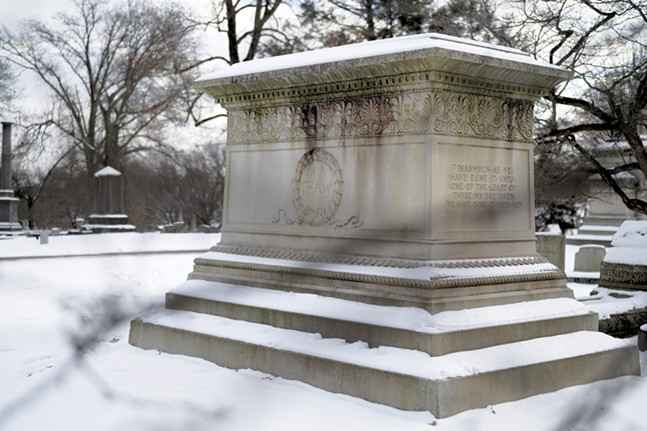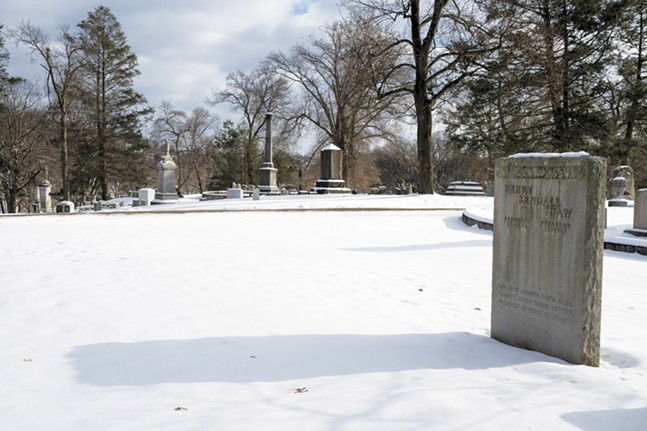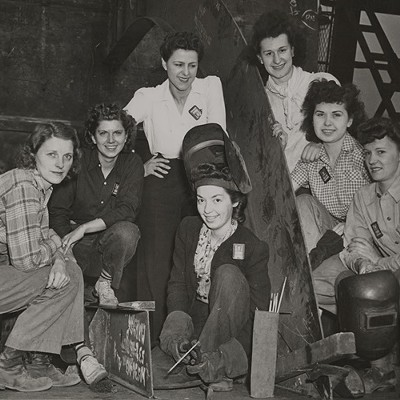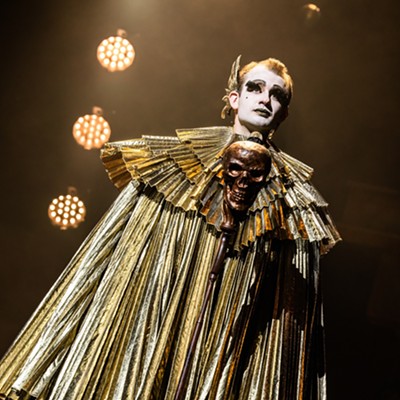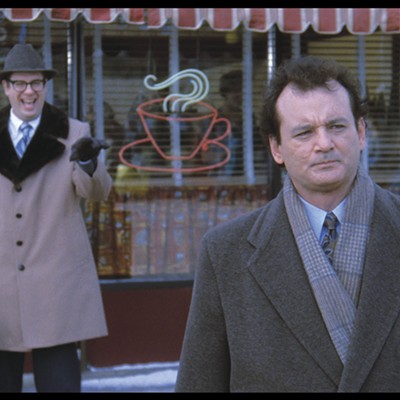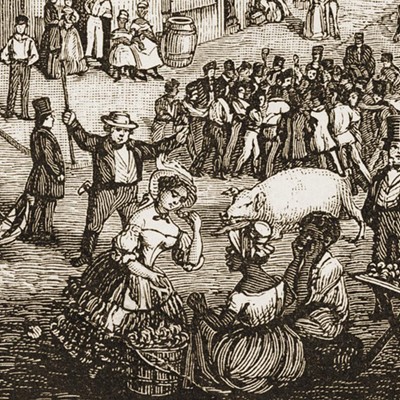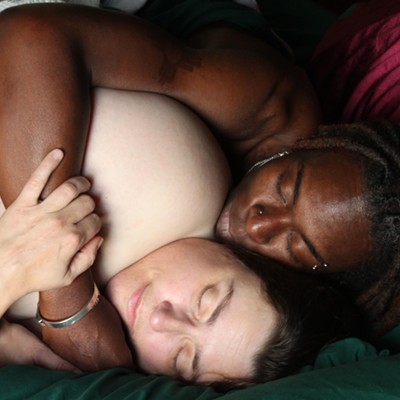Only a few traces of the Thaw family remain around Pittsburgh. Keepers of a vast Gilded Age fortune built on transportation, coal and coke, and banking, the Thaw name once carried the weight of the Vanderbilts or the Astor family of New York City. Second-generation patriarch and Pittsburgher William Thaw Sr. is still counted among the 100 wealthiest Americans ever.
Today, just one of his Pittsburgh mansions in the North Side’s Allegheny West neighborhood — in the late 19th century, home to “Millionaire’s Row”— still bears the Thaw name. You can rent one of its nine renovated apartments (vaulted ceilings intact) for around $2,000 a month.
The Thaw name has faded in part because William's son, Harry Kendall Thaw, committed one of the most sensational crimes of his era — a high-profile murder resulting in what was dubbed the “trial of the century,” which began on Jan. 23, 1907, 117 years ago this week. Before the Lindbergh kidnapping or the O.J. Simpson case, Harry Thaw captured headlines for months when he shot prominent New York City architect Stanford White in cold blood. Most bizarrely, the crime occurred on the rooftop theater of Madison Square Garden — a building White designed — in front of 900 witnesses.
“Every decade has its crime of the century,” Dr. Paula Uruburu, who wrote the definitive book on the subject, American Eve, told the Criminal podcast, “but this was really the first modern one in terms of the media coverage … in terms of what the rich and the powerful were doing behind closed doors.”
Given Pittsburgh’s affinity for true crime (this is the home of famed forensic pathologist Cyril Wecht after all), as well as its affinity for its own history, one might expect it to be better known..., especially considering two of the three principals involved hailed from the Pittsburgh area.
The Jun. 1906 murder arose from the two men's obsession with Evelyn Nesbit, a 21-year-old model and chorus girl from Tarentum, Pa. Official accounts are unclear about Nesbit’s birthday — her mother exaggerated her age to skirt child labor laws — but when she was born on Christmas Day 1884 or 1885, she was reportedly so beautiful that people from neighboring counties came to see her.
Nesbit’s looks, which Uruburu characterizes as “Pre-Raphaelite,” would quickly become one of the focal points of her life. Journalists during the murder trial wrote of her “liquid brown eyes” and “rosy Cupid’s bow mouth,” often commenting she looked like no other girl anyone had ever seen.
When Nesbit was 10, her father died suddenly, leaving the family penniless. They moved to Philadelphia, where Nesbit was spotted by an artist in a department store; struck by her beauty, he asked her to sit for a paid portrait. This kicked off a high-flying modeling career, encouraged by Nesbit’s mother as the income supported the entire family. Nesbit posed for women’s magazines such as Vanity Fair, Harper's Bazaar, and Cosmopolitan, as well as calendars and ads. As a teenager, she often posed in various costumes, sometimes semi-nude.
Nesbit’s fame went stratospheric when she became a Gibson Girl — one of the models sketched in pen-and-ink by illustrator Charles Dana Gibson, and believed to represent the fin-de-siècle feminine ideal, with youthful features and hair piled high. Readers might know Nesbit from vintage Coca-Cola ads or the Gibson Girl stamp released in 1998 (though Nesbit’s name isn’t mentioned).
The phrase “It Girl” was coined for her — as Urburu says, before anyone knew what “it” was. She was among the first “modern” women, the embodiment of a new period of liberation and mass celebrity, comparable, Urburu asserts, to Marilyn Monroe.
In 1901, Nesbit made the leap onto Broadway to join the hit production Florodora as a chorus dancer. The 16-year-old attracted the attention of Stanford White, 30 years her senior. White was a celebrated architect — he designed Tiffany’s and the Washington Square Arch and helped usher in the “American Renaissance” period — and socialite. He maintained a number of exclusive social clubs for well-to-do men around New York City.
White was also notorious for pursuing underage showgirls. His pattern was inviting them to his various “snuggeries,” and then showering them with money and attention in an attempt to groom them into a sexual relationship.
After gaining Nesbit’s trust, he invited her to one of his apartments. White brought her into a mirrored room, plying her with champagne. Though her accounts of the assault differ, salient details remain the same: Nesbit felt dizzy, then woke up nude next to White; with no memory of what happened, she saw her own reflection and screamed.
Their relationship afterward was complex, with Nesbit labeling White a “benevolent vampire,” but remaining his companion.
American Eve quotes Nesbit’s writings from 20 years later: “I would dare not say of him that he ruined my life … He merely made a way for me … a painful way … which inevitably was mine.”
Unbeknownst to Nesbit, she’d attracted another suitor. Harry Thaw attended 40 performances of Nesbit’s new show, The Wild Rose, under the pseudonym Mr. Munroe. When he finally contrived a situation for him and Nesbit to meet, he revealed himself with a flourish: “I am not Mr. Munroe. I am Harry Kendall Thaw — of Pittsburgh!”
A Pittsburgher herself, Nesbit knew of the heir to the $40 million Thaw fortune also nicknamed “Mad Harry.” In Pittsburgh, he’d been known for excessive drinking and drug use, and erratic and violent behavior, which his mother often paid to keep quiet. In New York City, he had a reputation for off-putting antics, such as lighting cigars with $100 bills (more than $3,000 today) and riding a horse up the steps of the Union Club — one of the exclusive places frequented by White to which Thaw desperately wanted access. (For his part, White called Thaw the “Pennsylvania pug,” a dig at his round face.)
Thaw also financed “anti-vice” efforts as a pet cause. With his backing, the New York Society for the Suppression of Vice sought to restore public morality and return to Christian traditions. Later, it was revealed Thaw would place ads posing as a drama coach to lure young aspiring actresses, then would handcuff and whip them in an effort to “save” them.
Given White’s licentious reputation, Thaw had a “veritable monomania” about him and his corruption of Nesbit, whom Thaw saw as an angel and “the waif of Tarentum.”
When White lost interest in Nesbit, she briefly enrolled in a boarding school. In 1903, she fell ill, needing costly emergency surgery. At the urging of her mother, Nesbit contacted Thaw. He sent a top doctor, then whisked Nesbit and her mother away for a European vacation to recover.
While in Paris, Thaw cornered Nesbit and coaxed her into talking about Stanford White and the assault, sobbing uncontrollably when she told him. After her confession, the trip suddenly morphed into a tour of sites devoted to virgin martyrs. While visiting Joan of Arc’s birthplace, Thaw wrote in the guestbook, “She would not have been a virgin if Stanford White had been around.”
But Thaw’s facade of benevolence fell away one night in a gothic Austro-Hungarian castle. Sending the staff away, Thaw isolated Nesbit. He beat her and sexually assaulted her, holding her captive for two weeks.
Nesbit, 17, felt as if she’d returned from Europe with nothing, recalling the harsh reality of her childhood. Thaw was immediately tearful, sending flowers and letters, and promising to “become a Benedictine monk” if they’d only get married.
After three years of pleading, Nesbit acquiesced.
She married Thaw at Third Presbyterian Church in Shadyside in April 1905. Thaw selected an all-black outfit for his bride — a prevailing theory was that it symbolized her lack of chastity — and during the ceremony, Nesbit never removed her coat or hat. Thaw told the Pittsburgh press it made for an easy-traveling outfit for their honeymoon. The new Mrs. Harry Thaw, whom there was much media speculation about, was named the “Mistress of Millions.”
Afterward, she spent most of her time cooped up at the Thaws’ most extravagant mansion on Lyndhurst Dr. in Squirrel Hill (it was razed in the 1940s).
Nesbit’s spirits were buoyed when Thaw announced they’d depart for a European trip from New York City on June 25, 1906 — until he added a stop to see a show at Madison Square Garden. Despite sweltering heat, Thaw wore a long black overcoat. White arrived toward the end of the show — during the final song “I Could Love a Million Girls" — and after some hesitation, Thaw stood and brandished a .38 revolver.
In front of the packed theater, he fired three shots. Initially, the crowd thought it was a gag for the show, but it quickly became clear White was dead. It was also so bright under the stage lights that witnesses reported seeing the millionaire shoot a golden gun.
The public’s attention was captured instantly, with even President Theodore Roosevelt commenting on the distracting sensationalism of the newspaper coverage.
Today, the Heinz History Center houses the Thaw family papers. Though the collection’s finding aid specifically notes there are scant documents about the trial (likely heavily edited by the family), there are several newspaper clippings, including a full page of reader-submitted editorials from the Pittsburgh Leader. Pittsburgh’s sympathies, at the time, seemingly were not with White, instead imagining Thaw as a righteous figure. The prevailing sentiment was captured in a letter addressed to White titled, “Your Sin Will Find You Out.”
There is also a handful of personal correspondence — original letters, scrawled in early 20th-century cursive.
“It is most distressing the way in which H.K.T. has been doing right along,” John Brashear, a Pittsburgh astronomer who directed the Allegheny Observatory, funded by William Thaw Sr., wrote. “I have done all my power in the way of decency at least to keep in pleasant relationship with Mrs. T. And Harry. Indeed, I’ve almost gone to the limit my conscience would permit me. And I would perhaps do more if it would help to forever close this sad travesty.”
Ultimately, the trial of the century was not one, but two trials. The first, in Jan. 1907, deadlocked the jurors, resulting in a hung jury. During the second, a year later, Thaw successfully pled temporary insanity. The defense coined the phrase “dementia Americana,” intended to describe the uniquely American circumstance of a man needing to defend a woman’s chastity. Thaw was committed to a state hospital and released in 1915. He died at age 47.
After the trial, Nesbit was effectively cut off, and the couple divorced. She traveled with a vaudeville troop through Europe, where she gave birth to a son. She struggled with addiction throughout her life but penned two memoirs, even serving as advisor to a biopic about her — The Girl in the Red Velvet Swing in 1955, starring Joan Collins — and eventually settling in Southern California.
Perhaps it’s less odd that Thaw’s legacy remains hidden locally than that Nesbit, the ground-breaking woman who survived him, isn’t more celebrated.
In 2012, when Uruburu was launching her book American Eve, she made a stop in Tarentum. “This is the most special talk because it’s Evelyn's hometown,” Uruburu told TribLive. A local historian was one of the book’s first sources, and some of Nesbit’s relatives still live in the Allegheny-Kiski Valley.
Looking through her correspondence, it was plain to see “how she rocked civilizations, and that they needed a good kick in the ass,” Uruburu said.

